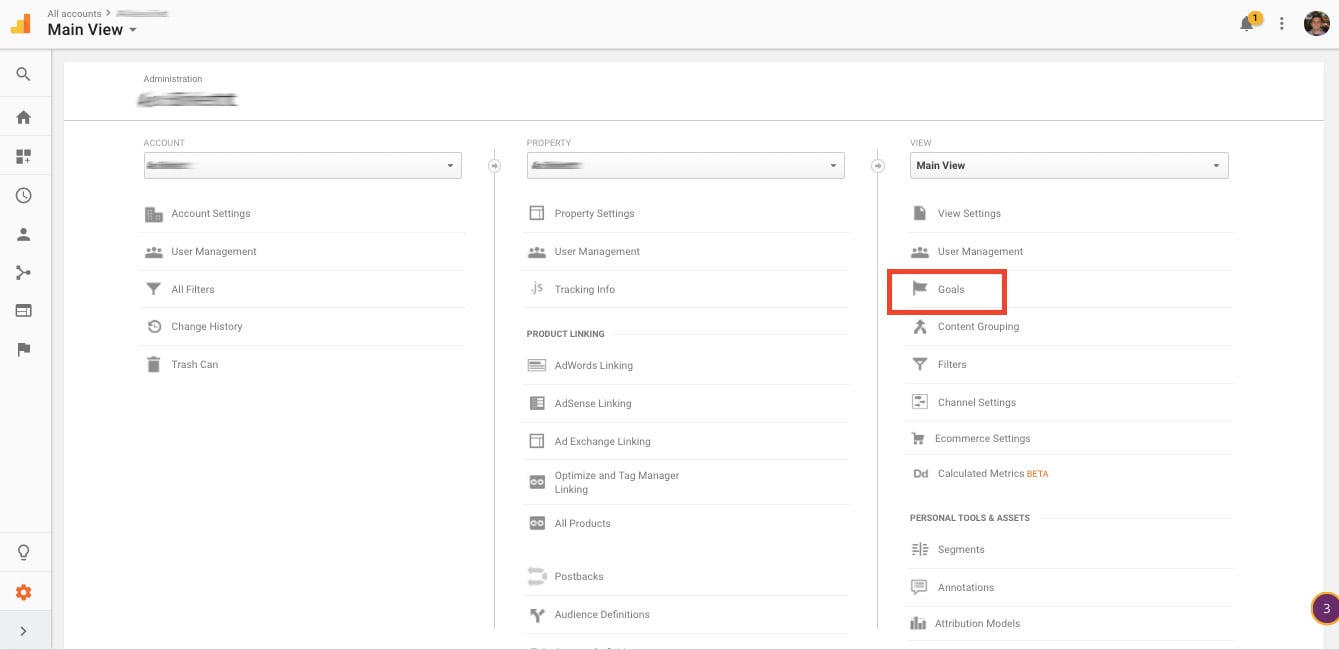Introducing the Blind Destinations: Understanding What Google Analytics Goals Can not Measure
In the world of digital analytics, Google Analytics stands as a powerful tool for monitoring and analyzing online individual communications. Comprehending what Google Analytics objectives can not gauge is critical for acquiring a comprehensive sight of customer habits and engagement.
Individual Actions on External Platforms
Recognizing exactly how users communicate on exterior platforms is crucial for optimizing on the internet techniques. Outside platforms, such as social media networks, recommendation websites, and on the internet discussion forums, play a considerable duty in driving web traffic to a company's site. By assessing user actions on these systems, businesses can obtain important understandings right into the effectiveness of their advertising initiatives and the choices of their target audience.
One secret element of user habits on outside systems is the recommendation source. By tracking where the individuals are coming from, businesses can recognize which systems are driving one of the most traffic to their site. This info can aid business allocate their sources better, concentrating on the systems that generate the most effective results.

Offline Communications and conversions
Analyzing individual behavior on outside platforms supplies useful insights right into online techniques; nonetheless, taking into consideration offline conversions and interactions is just as critical for a thorough understanding of a company's total efficiency. While Google Analytics stands out at tracking on the internet interactions, it falls brief in recording the complete client trip that typically consists of offline touchpoints. Offline conversions, such as in-store acquisitions or phone inquiries, play a significant duty in several companies' success. Ignoring these interactions can result in an altered view of the effectiveness of marketing projects and general service efficiency.

Acknowledgment Beyond Last Click
When diving into the realm of digital marketing analytics, it becomes crucial to look past the single touchpoint of the last click for a much more comprehensive understanding of attribution. While Google Analytics provides important understandings into individual behavior, counting only on last-click attribution can be restricting - what data is google analytics goals unable to track. Acknowledgment versions that exceed the last click use an extra nuanced view of the client trip, taking right into account all the touchpoints that bring about a conversion
Attribution beyond the last click permits marketing professionals to assign credit report to numerous interactions along the conversion path, giving a clearer picture of the effectiveness of various marketing networks. By exploring multi-touch attribution designs such as linear, time decay, or position-based attribution, organizations can better assign their advertising and marketing budget plans and optimize their approaches for maximum effect.
Comprehending the impact of each touchpoint in the conversion process is vital for making educated decisions and optimizing ROI. By accepting attribution past the last click, organizations can acquire deeper insights right into consumer habits and tailor their marketing efforts better.
Cross-Device and Cross-Browser Monitoring

In a similar way, cross-browser monitoring enhances cross-device monitoring by catching user behavior as they switch between various web browsers. Comprehending exactly how customers interact with websites on numerous browsers can assist marketers optimize their on-line experiences to ensure consistency and performance throughout different platforms.
Qualitative Data and Customer Intent
Understanding user intent through qualitative data analysis is essential for establishing targeted digital advertising and marketing approaches that resonate with the requirements and preferences of the target audience. Qualitative data provides understandings right into the 'why' behind individual activities, shedding light on inspirations, emotions, and preferences that Our site quantitative data alone can not capture. By evaluating customer comments, comments, and communications, marketing professionals can uncover beneficial details concerning individual intent, enabling them to customize their messaging, material, and offerings to better straighten with what their audience is looking for.
Qualitative data likewise aids in recognizing the context in which users involve with an internet site or app. This contextual understanding enables marketing experts to create even more customized and appropriate experiences, eventually driving greater interaction and conversion prices. By diving right into individual intent with qualitative information evaluation, organizations can gain a deeper understanding of their target audience, causing a lot more effective advertising techniques that meet customers' expectations and requirements.
Verdict
In verdict, Google Analytics goals have restrictions in gauging user habits on exterior platforms, offline conversions, acknowledgment past last click, cross-browser and cross-device monitoring, and qualitative information associated to individual intent. what data is google analytics goals unable to track. It is very important for services to be conscious of these dead Check Out Your URL spots in order to supplement their information analysis with various other tools and approaches to acquire a much more comprehensive understanding of their target market and improve their general electronic advertising and marketing methods
By evaluating user habits on these platforms, organizations can gain useful insights right into the performance of their marketing efforts and the choices of their target audience.
Analyzing user actions on outside systems gives important understandings right into on the internet techniques; nonetheless, considering offline conversions and interactions is similarly crucial for an extensive understanding of a check that business's total efficiency.In electronic marketing analytics, relocating beyond last-click attribution to check out cross-device and cross-browser monitoring is important for acquiring an all natural understanding of individual interactions throughout numerous systems and devices. By analyzing user feedback, remarks, and communications, marketing experts can discover important information regarding user intent, allowing them to customize their messaging, web content, and offerings to much better straighten with what their audience is looking for.
By delving right into user intent through qualitative data analysis, companies can obtain a deeper understanding of their target audience, leading to extra reliable advertising and marketing strategies that fulfill individuals' expectations and needs.
 Joshua Jackson Then & Now!
Joshua Jackson Then & Now! Macaulay Culkin Then & Now!
Macaulay Culkin Then & Now! Marcus Jordan Then & Now!
Marcus Jordan Then & Now! Robbie Rist Then & Now!
Robbie Rist Then & Now! Mary Beth McDonough Then & Now!
Mary Beth McDonough Then & Now!